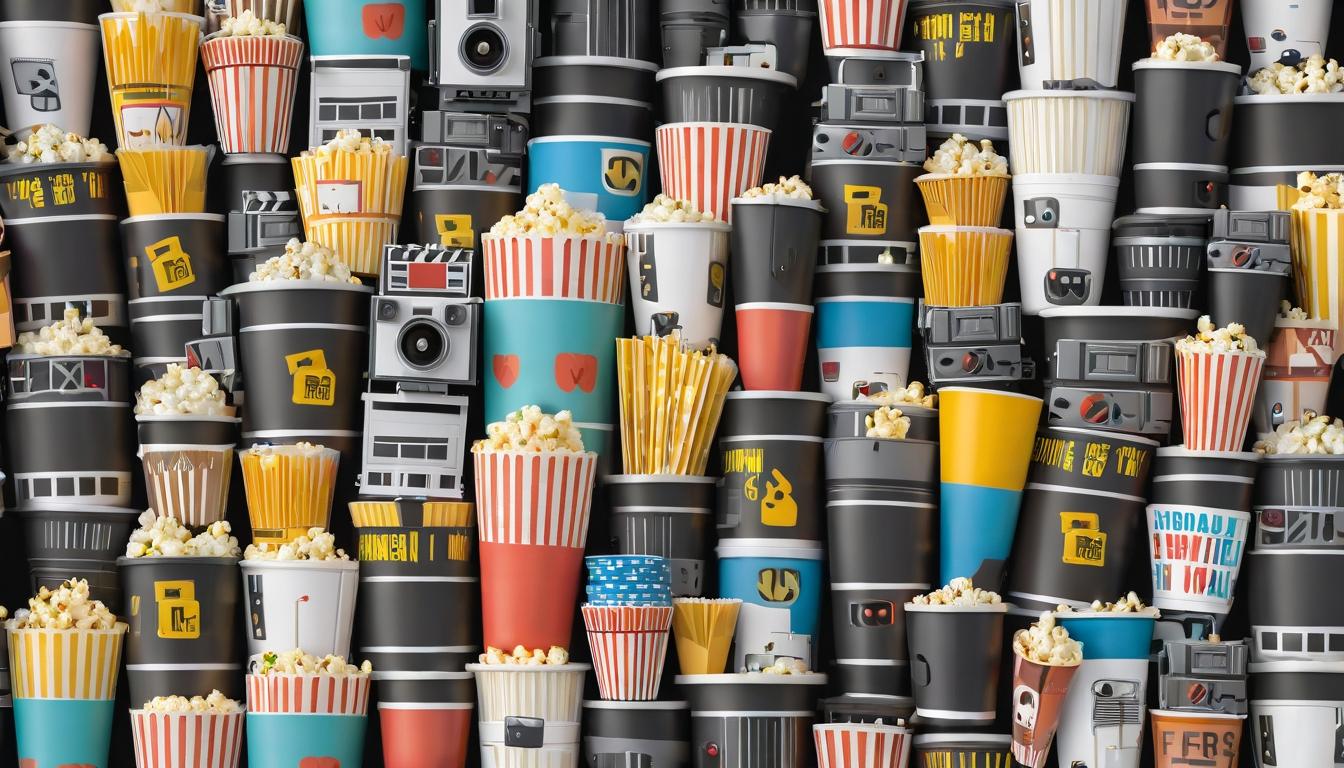In the sprawling digital landscape where content flows like an endless river, a curious phenomenon has taken root. We're living through the most prolific era of film production in history, with streaming platforms churning out new titles at a pace that would make Hollywood's golden age producers dizzy. Yet, walk down any street and ask people what they watched last month, and you'll likely be met with blank stares or vague recollections. The paradox of our time isn't that we're watching less—we're consuming more visual content than any generation before us. The real mystery is why so little of it sticks.
The numbers tell a story of abundance bordering on absurdity. Netflix alone released over 70 original films in 2023, not counting the hundreds of licensed titles that cycle through its digital shelves. Amazon Prime, Apple TV+, Hulu, and the resurrected HBO Max (now simply Max) contribute hundreds more to the annual tally. If you attempted to watch every new movie released across major streaming platforms in a single year, you'd need to complete nearly three films per day without repetition. This doesn't even account for traditional theatrical releases, which continue their steady output despite streaming's dominance.
Yet, for all this plenty, cultural impact has become increasingly rare. Think back to the 1990s, when films like Pulp Fiction, The Matrix, or Titanic became genuine cultural events. People discussed them at water coolers, quoted lines in casual conversation, and remembered them years later. Today, even highly promoted streaming films with A-list casts often vanish from public consciousness within weeks of release. The digital graveyard is filled with expensive productions that generated brief algorithmic buzz before disappearing into the void.
What's causing this cultural evaporation? Industry insiders point to several factors converging at once. The first is what psychologists call 'attention fragmentation.' Unlike the scheduled programming of broadcast television or the planned outing to a movie theater, streaming turns viewing into something that happens in the margins of life—during lunch breaks, while folding laundry, or as background noise while scrolling through social media. The experience has become so decentralized and casual that films rarely command our full attention anymore.
Then there's the algorithm itself—that mysterious digital curator that determines what we see and when we see it. Streaming platforms have become masters of personalization, creating individualised content bubbles that rarely overlap. Your friend might be watching entirely different movies recommended by the same service based on their viewing history. This hyper-personalization means fewer shared cultural experiences, even among people using the same platforms.
Production executive Maria Chen, who has worked with both traditional studios and streaming giants, describes the shift in stark terms. 'We've moved from an era of curation to one of saturation,' she explains. 'Studios used to carefully select which projects to greenlight based on potential audience appeal and cultural relevance. Now, the strategy is to flood the zone with content, hoping something will stick. The result is that even good films get lost in the noise.'
The economic models themselves contribute to the problem. Traditional theatrical releases had built-in marketing cycles—trailer releases, press junkets, review embargo dates—that built anticipation over months. Streaming films often appear with little warning, promoted heavily for a week or two before the algorithm moves on to the next release. The compressed lifecycle gives films less time to build word-of-mouth momentum.
There's also what filmmakers quietly call 'the middle-class movie' problem. As streaming services compete for subscribers, they've prioritized either massive blockbuster-style productions or micro-budget niche content. The mid-budget films that often produced lasting cultural impact—think Jerry Maguire or When Harry Met Sally—have become increasingly rare. These films traditionally balanced commercial appeal with character-driven storytelling that resonated beyond opening weekend.
The consequences extend beyond mere nostalgia for water cooler conversations. The erosion of shared cinematic experiences may be reshaping how we relate to storytelling itself. Anthropologists have long noted that societies use shared stories to create common reference points and cultural cohesion. As our viewing becomes increasingly individualized, we lose those collective touchstones.
Some filmmakers are fighting back against the tide. A growing movement of directors are insisting on theatrical windows for their streaming projects, understanding that the collective experience of cinema attendance creates memories that living room viewing cannot replicate. Others are designing films specifically to break through the digital noise—creating visually striking sequences meant to be shared on social media or incorporating interactive elements that encourage discussion.
Meanwhile, audiences are developing their own coping mechanisms. Online communities have sprung up dedicated to 'saving' worthy films from algorithmic obscurity. Social media campaigns deliberately organize mass viewings of overlooked gems to boost their visibility in recommendation algorithms. There's a growing awareness that in the age of infinite choice, curation has become a radical act.
The solution may lie in rethinking our relationship with streaming content altogether. Rather than treating platforms as bottomless buffets where we graze endlessly, we might benefit from more intentional viewing habits—setting aside dedicated time for films, discussing them with friends, and actively seeking out recommendations beyond what the algorithm serves us.
What's clear is that the relationship between quantity and cultural impact isn't linear. More movies don't necessarily mean more memorable movies. As we navigate this new landscape, both creators and viewers face the same challenge: how to find meaning in the midst of plenty, and how to ensure that the stories that matter don't disappear into the digital ether.
The streaming paradox: why more movies than ever are being made, but fewer are being remembered

